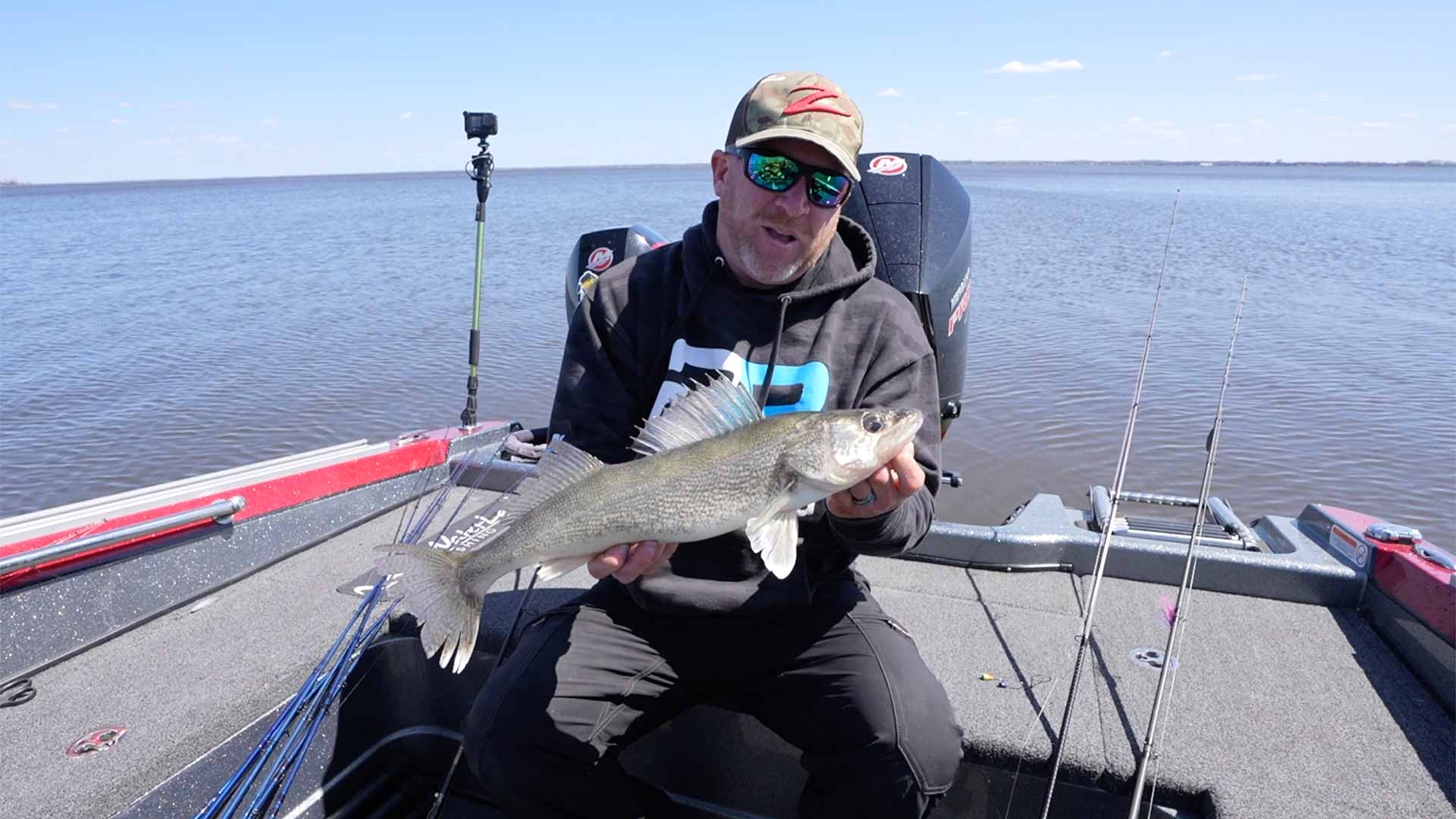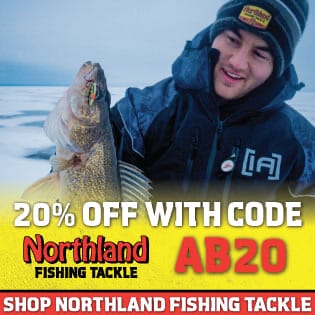Winter is finally coming to an end and everyone is chomping at the bit to get for some early walleyes. Luckily, there are some amazing river walleye opportunities for those of you who aren’t patient enough to wait for the ice to melt on the lakes. This happens to be one of the best walleye bites of the year. We reached out to some of the best anglers in the Upper Midwest and asked them one simple question:
How Do You Approach Early Season River Walleyes?
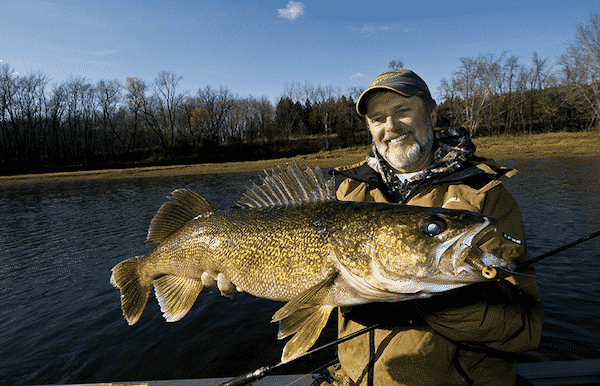
Al Lindner – Angling Edge TV
It’s really pretty simple. As far as presentation goes, it’s a VMC Hammer head jig with a minnow on it, preferably a shiner and in some cases a soft plastic. Everybody knows that, right? You could be slip drifting in deeper water controlling your speed with your trolling motor. In a lot of cases, some of the biggest fish will be taken casting up in shallow water — many river fishermen don’t do this.
One of the most overlooked presentations is a 3-way rig with a buoyant minnow-shaped bait such as a Flat Rap or an Original Rapala. It’s amazing how many BIG fish you will catch on this vs the jig and it is overlooked by most early season river fishermen.
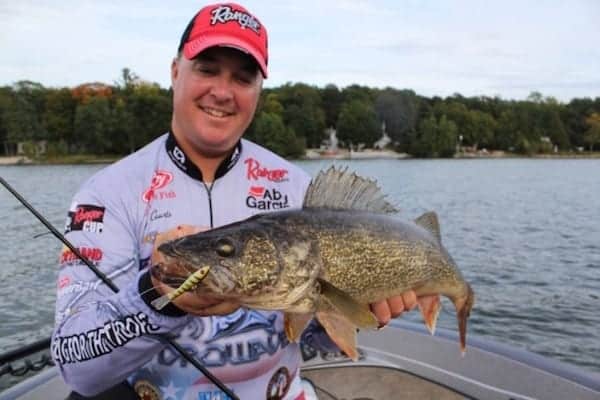
Mark Courts – Professional Angler
The number one thing you need to look for in early season river situations is clear water. Sometimes that can be difficult to find this time of year with runoffs going into the lake. I like to see around 6-inches of visibility. It just allows the walleye to see your bait better, which will lead to more bites.
I generally like to start out in the deep holes, specifically deeper pockets close to points, rocks, or gravel that the fish will spawn on in the weeks ahead. Finding good staging areas like that is key. I prefer the deep holes because that’s where you’re most likely to find a heavy concentration of fish. Paying close attention to your electronics can make a huge difference as well. Scan over potential areas with side-imaging to see how the fish are relating to the structure and cover of the hole. That will help you dial in your overall approach.
As far as bait selection goes this time of year, I’m a huge fan of Gulp! plastics for their scent. The Gulp! 4-inch crawler in watermelon pearl is probably my #1 bait when targeting earl season river walleyes. I like to contrast my baits, so I would probably use a jig head that is bright orange/chartreuse or dark purple. I love darker baits when there isn’t a ton of water clarity.
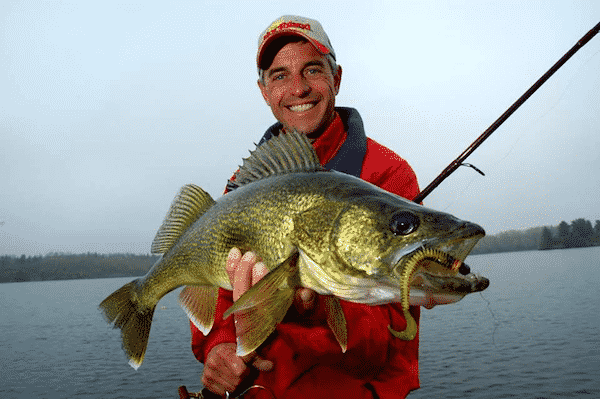
Chip Leer – Fishing the Wildside
My favorite ice-out walleye rivers feed into larger bodies of water, like the Rainy River at Lake of the Woods. Start your search at the river mouth, where walleyes gather in late winter, and work your way upstream. Virtually any current break can hold fish, but I concentrate on main-channel holes, which attract waves of fish moving upriver. Current seams and shorelines eddies also hold fish, particularly smaller males as the spawn draws near.
Vertical jig from an anchored position or while slipping with the current. I favor long-shank leadheads like Northland Fishing Tackle’s Slurp! Jig and round-head RZ Jig, although the new Swivel-Head Jig really gives trailers a life of their own. Whichever jig you choose, tip it with a 3- to 5-inch scented softbait like an Impulse plastic, which adds bulk, movement and taste. Experiment with different shapes including ringworms, boot tails and minnow designs. And don’t overlook old-school creature baits. Add a skull-hooked fathead or shiner minnow for extra scent and flavor. Minimal jigging is best, ranging from a simple hold to slow and methodical lift-drop maneuvers of a few inches or so. When river walleyes move shallow, pitch the same jigs toward the bank and swim, drag and pendulum them back to the boat.
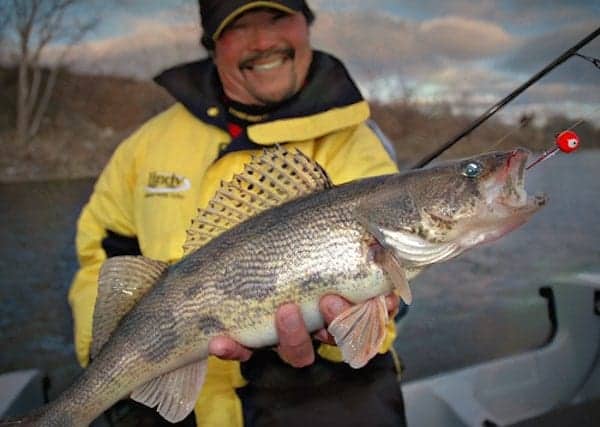
Ted Takasaki – Professional Angler
When I’m fishing for river walleyes super early in the season, the first thing I’m looking for is slack water areas where there’s a lot of hard bottom. Typically, they are going to be up shallow, especially if you want the bigger females. Let’s say we are down on Pool 4 of the Mississippi River: I would be looking for rocks and slack water areas adjacent to the dam. A lot of the biggest fish will usually come within about 5 miles of the dam.
As far as presentation goes, I think jigs and rivers always go well together. Your best bet is pitching a light jig tipped with a plastic right up onto the rocks and hard bottom areas. I’m usually running with a 1/8-oz jig, 3/16-oz is the highest I will go, and I’ll tip it with a ringworm-style plastic, sometimes you can get away with a paddle tail profile.
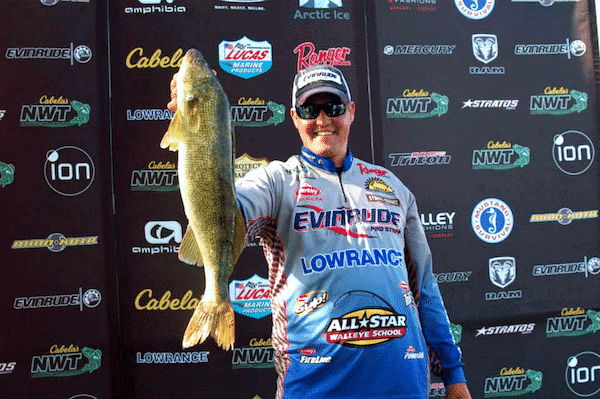
Bill Shimota – Professional Angler
When I’m tackling early season river walleyes, the first thing I’m noting is the water level. There’s always an ideal level of flow that fish want to sit in to feed, and that might be shallow or deep depending on how high (or low) the water is. If the water high and rising, I will start my search shallow. Often times, walleye will push up into shallow water areas to get away from the fast current out in the river. If it’s low and falling conditions, you will often times find those spring walleye right in the middle of the channel in some of the deeper corners.
When you’re out targeting walleye in deep water, there are a few different things you can do. Vertical jigging livebait or plastics is an obvious choice, but running a 3-way rig can also be very effective. If the ‘eyes are up shallow, I like to cast either a jig and plastic, a hair jig, or a blade bait. A couple of my go-to baits are the Johnson Thinfisher blade bait and a Berkley Powerbait Power Worm.
Keep your eyes peeled for current seams near feeder streams in shallow or deep water. That is where you’re going to find a lot of those big females hanging out. Current seams provide excellent staging and resting areas for river walleyes as they transition through the spawning process.

